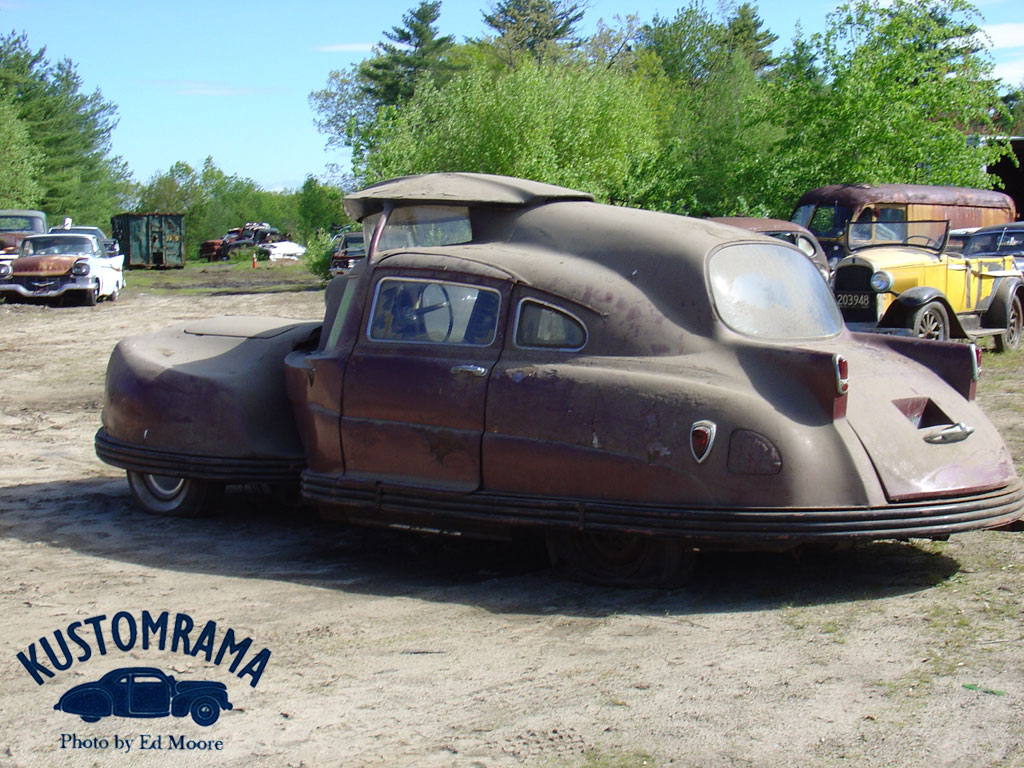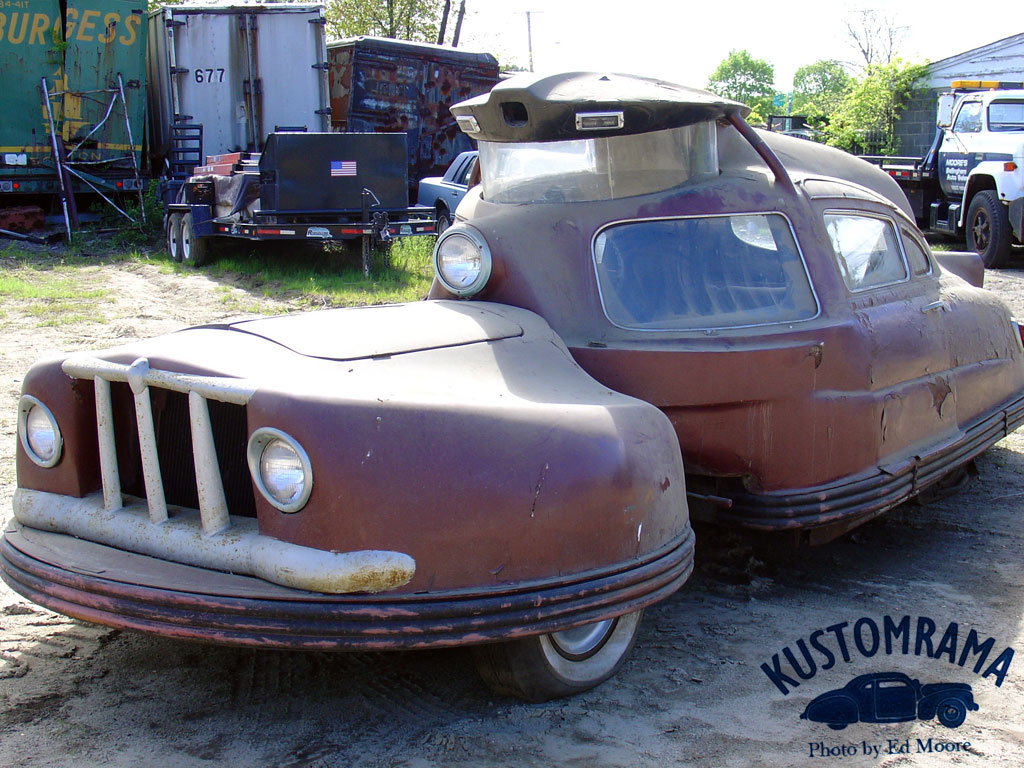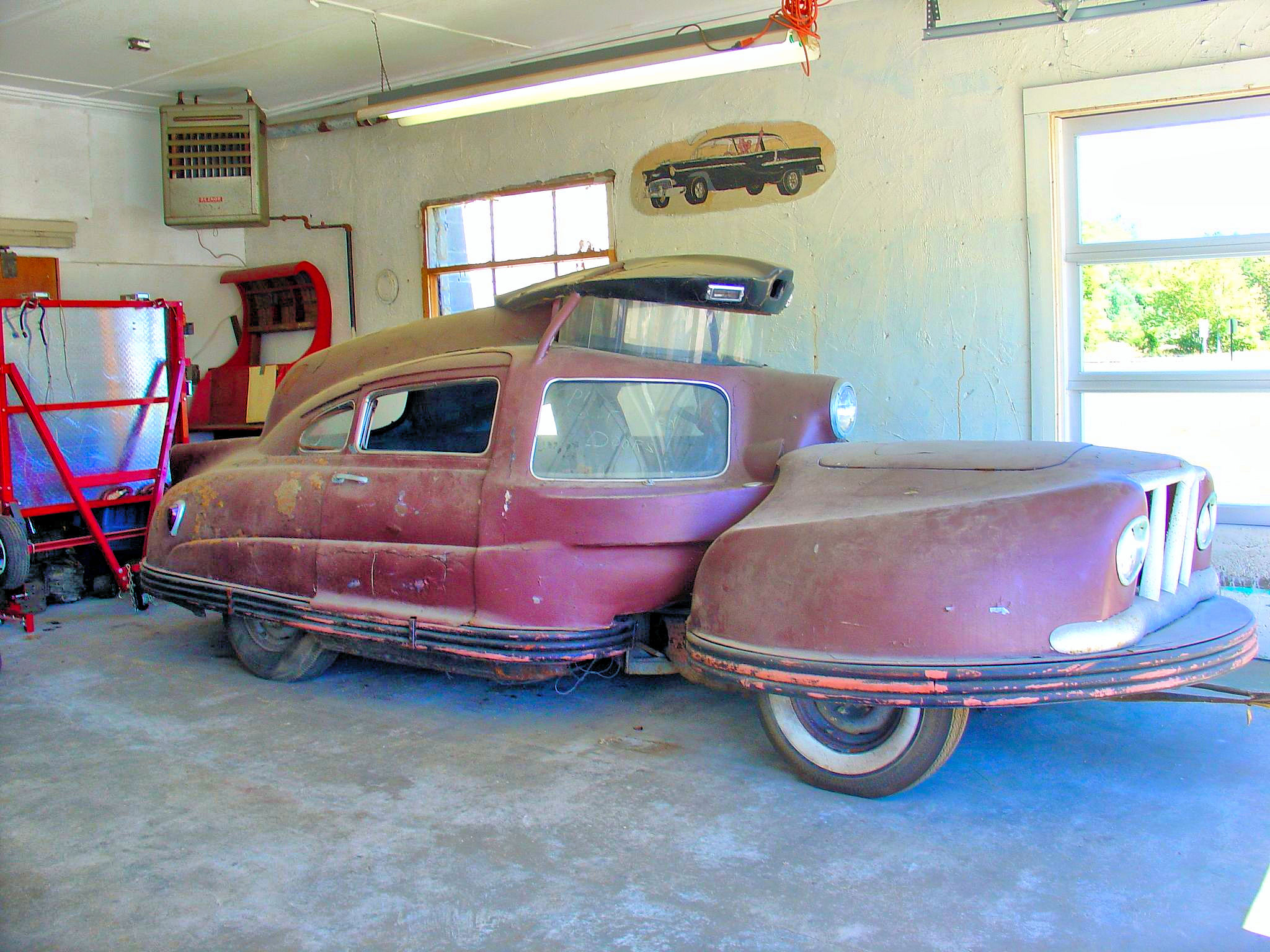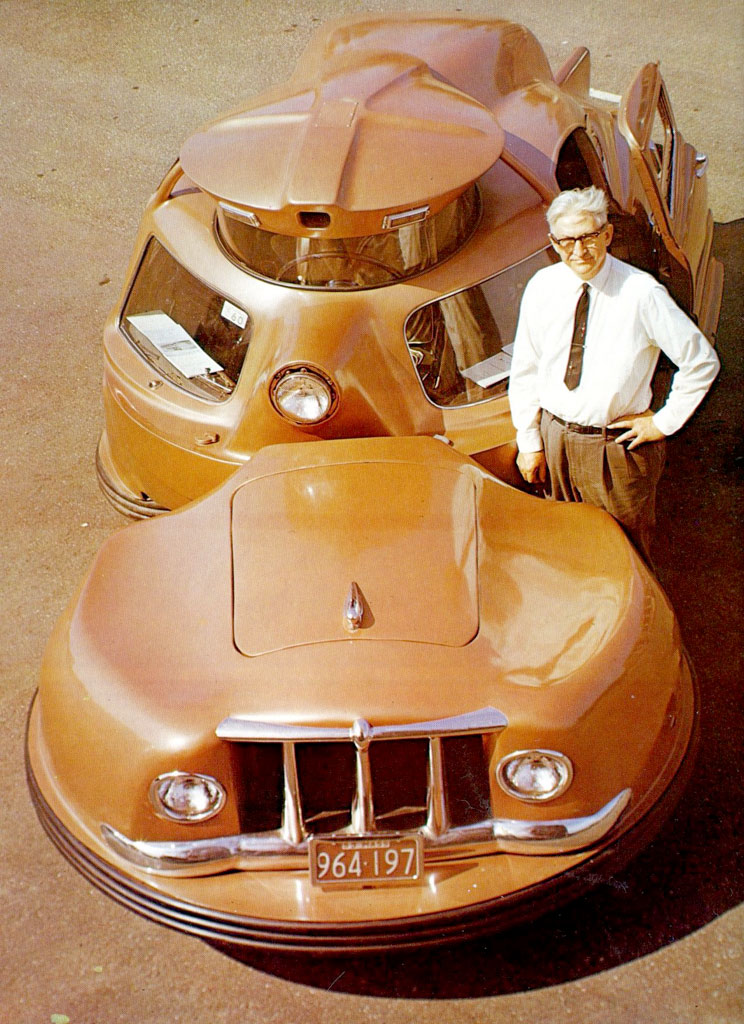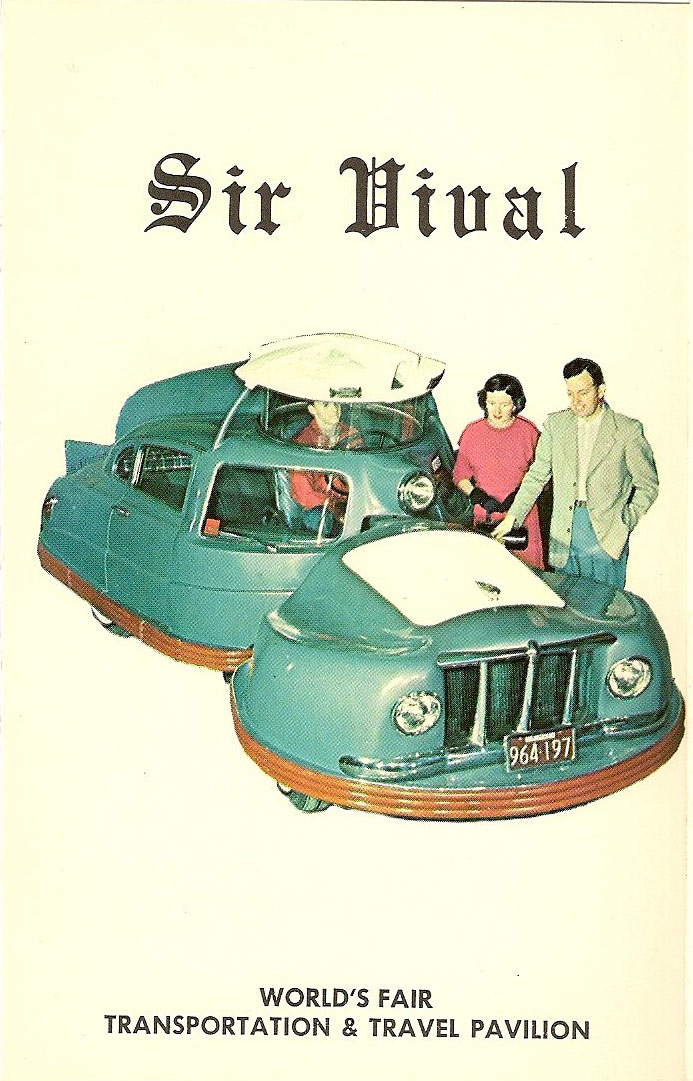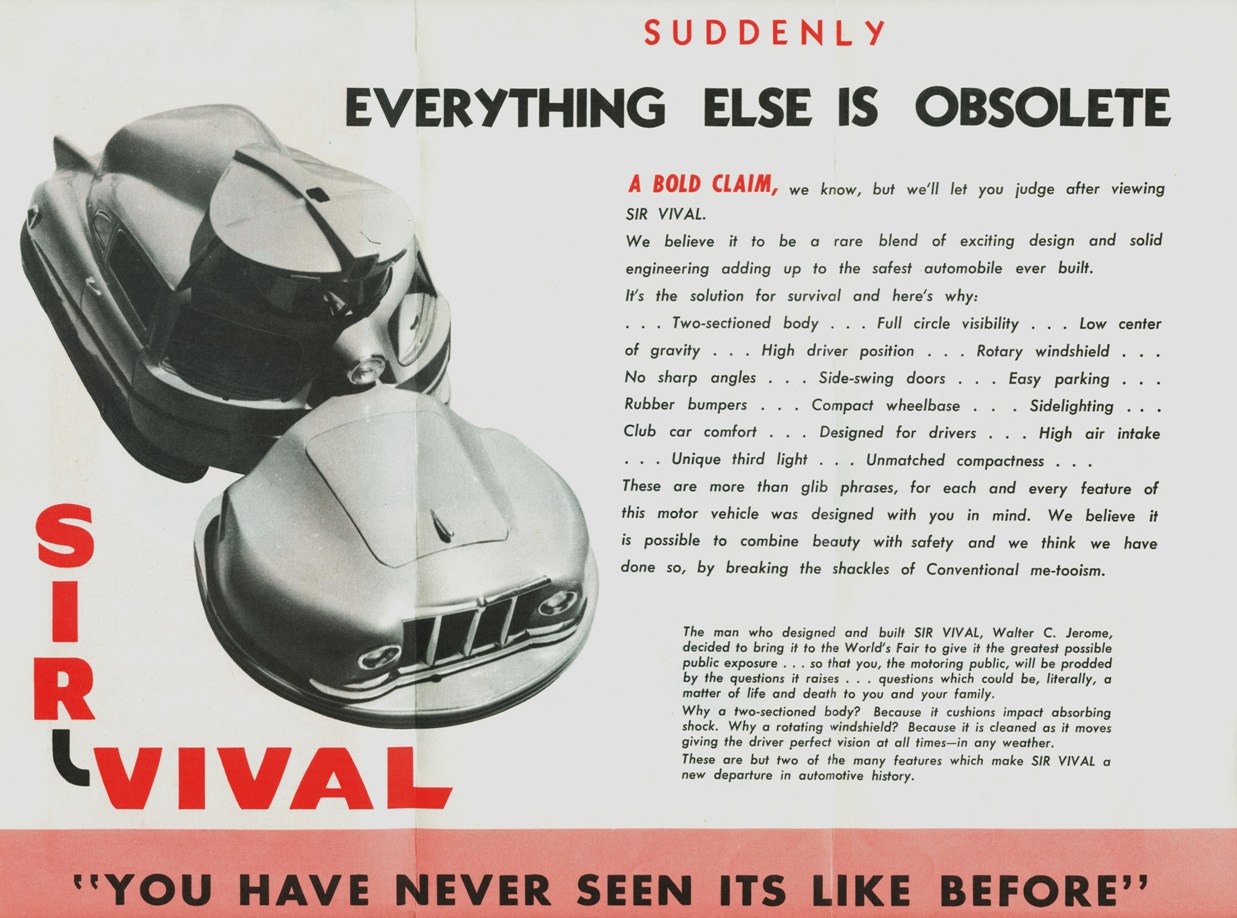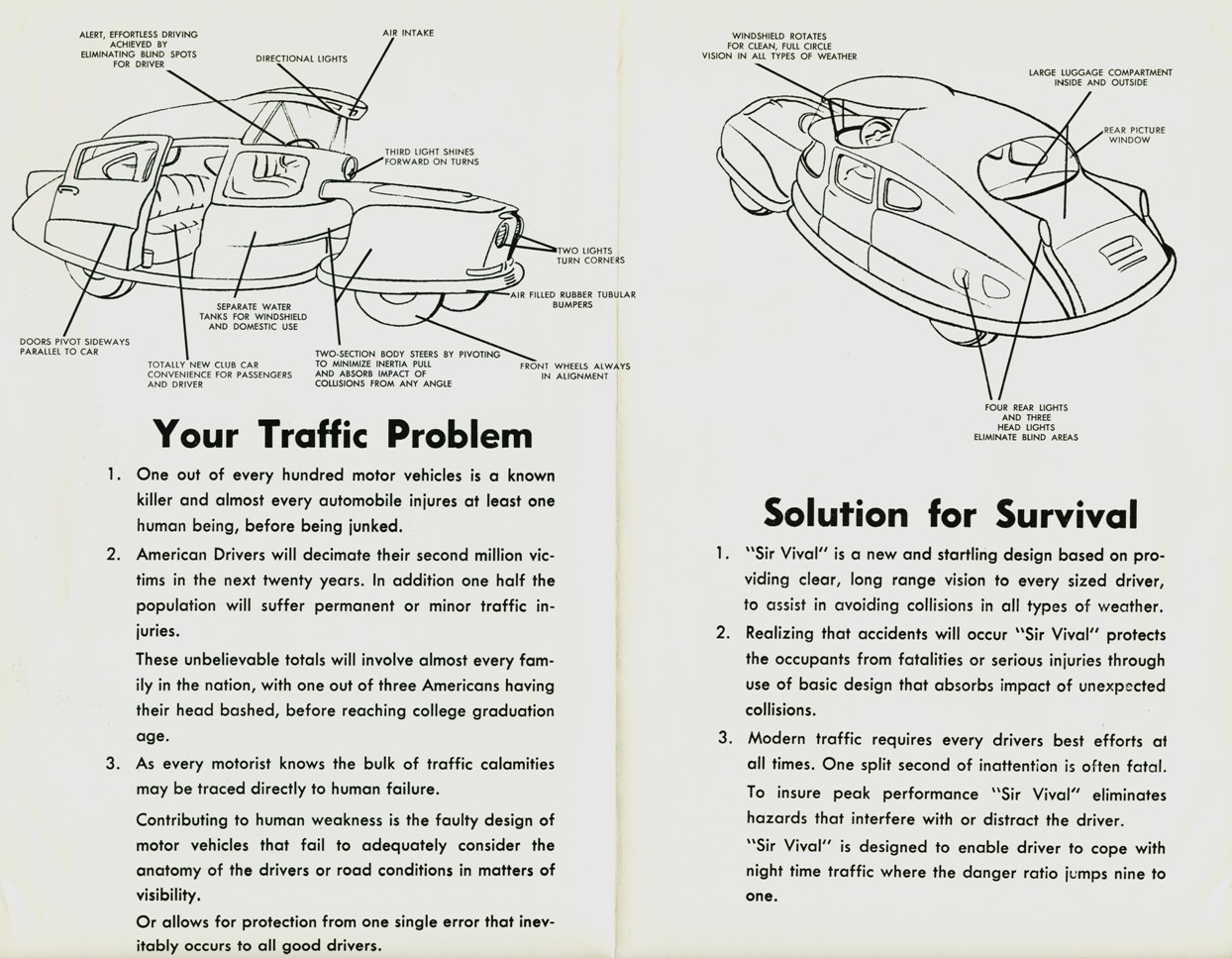Walter C. Jerome of Worcester, Massachusetts was a man possessed by a mission to make the world’s safest car. In the end, he failed to advance auto safety but Jerome’s segmented sedan might easily qualify as the world’s strangest car.
Primarily concerned with head-on collisions, Jones split his car in two, hoping the front section would absorb collisions, leaving the passenger cabin untouched. Using a heavily modified 1948 Hudson sedan as a rear section, he built a raised turret to provide the driver with maximum visibility, a goal he furthered with a 360 degree wrap-around screen that constantly rotated past built-in squeegees to wipe it clean.
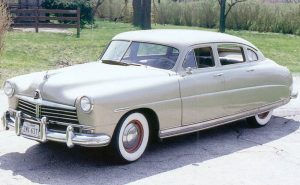
1948 Hudson Commodore
Wrap-around rubber bumpers protected the Sir Vival’s bodywork from errant motorists in slow speed collisions but they were just one of Jerome’s innovations. The Sir Vival was years ahead with seat belts, a padded interior, and built-in roll bars.
Auto safety has two parts: passive safety concerns passenger protection once a collision occurs, and active safety, or a car’s ability to avoid accidents due to handling and braking qualities. Like most Americans, Jerome focused only on passive safety, ignoring the fact that his car’s awkward separation into dual modules necessitated atrocious handling.
The Sir Vival appeared on magazine covers. Jerome had fancy two-color sales brochures printed that extolled its virtues. But its fifteen minutes in the spotlight quickly elapsed and it sunk without a trace. Amazingly, the eccentric Sir Vival turned out to be a survivor after all. A little the worse for wear, it remains in the care of Bellingham Auto Sales in Bellingham, Massachusetts.
Source: Jim Cherry, Classic Autos Examiner


